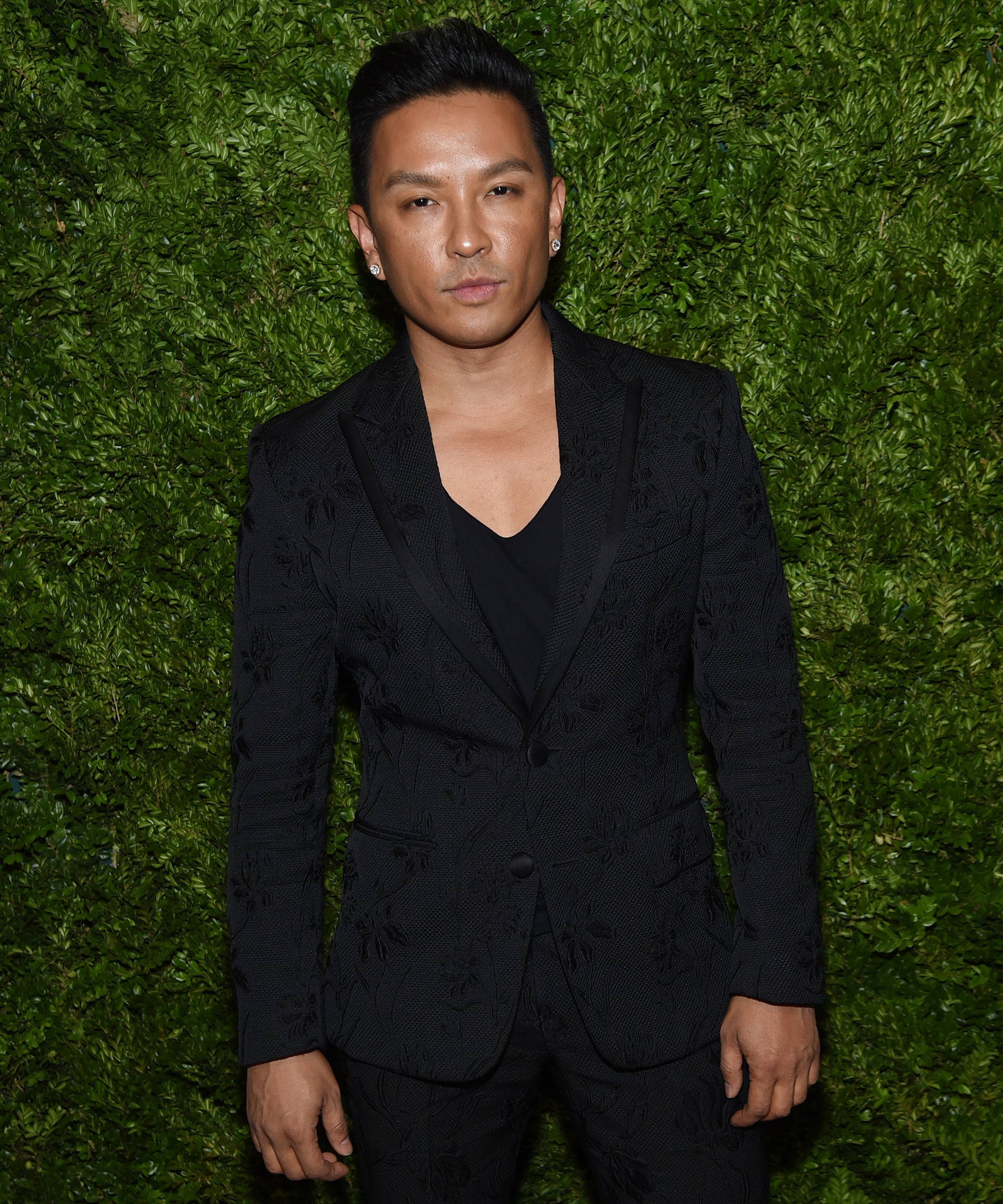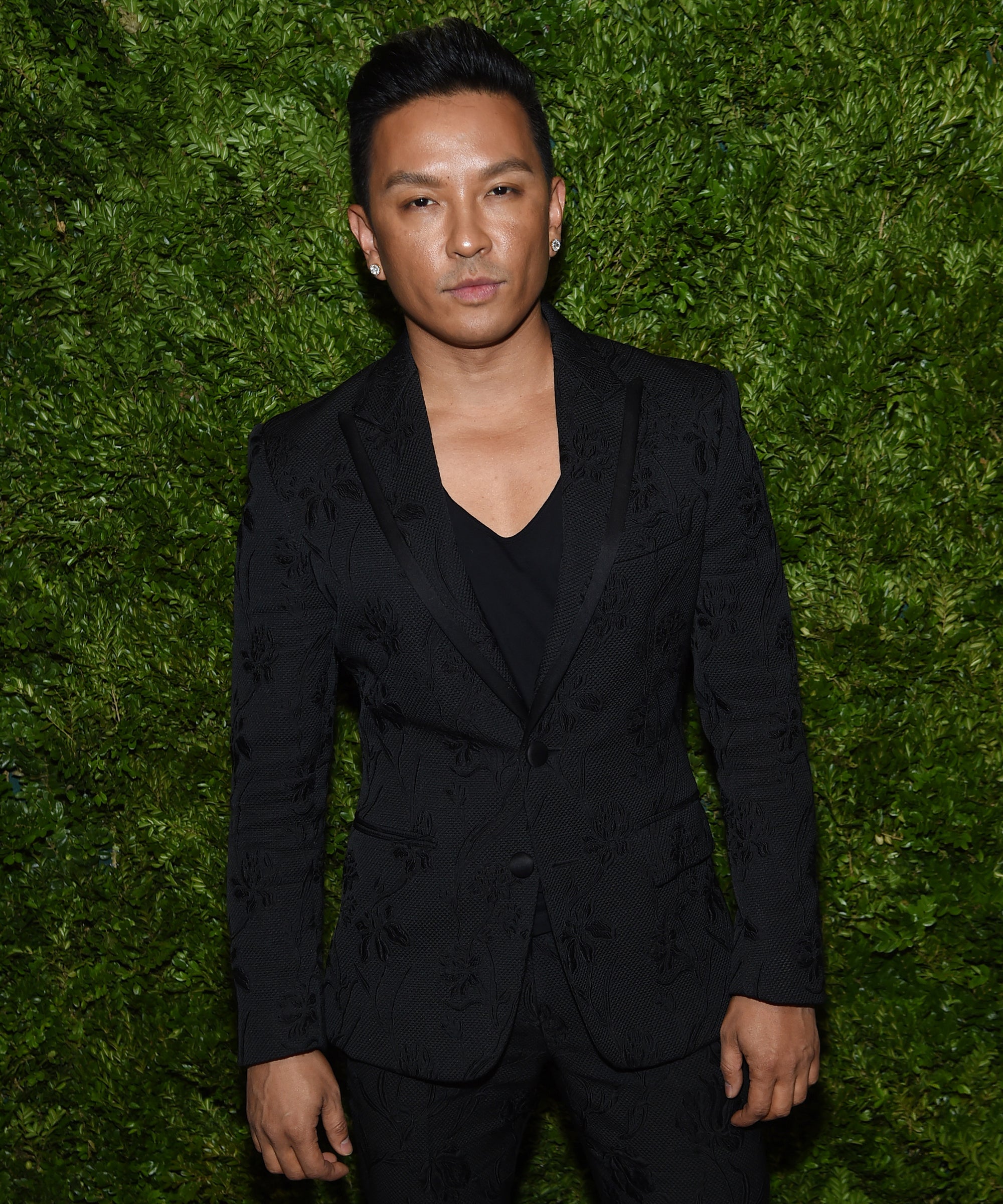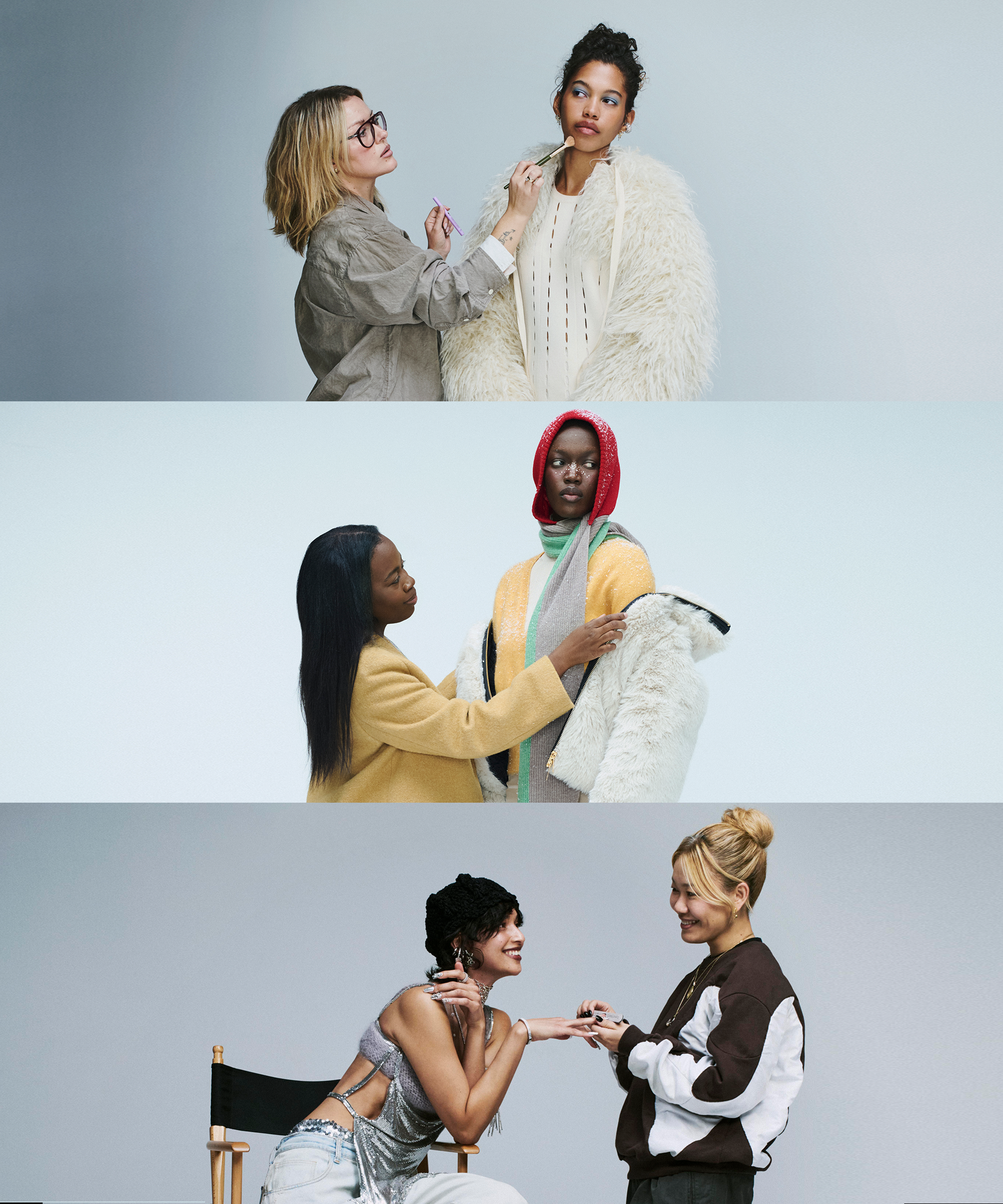

Designer Prabal Gurung responded to accusations that his namesake brand photoshopped an Indigenous land recognition sign from two images in its Resort 2022 lookbook, which was released earlier this week.
On Tuesday afternoon, Prabal Gurung released the new collection which was inspired by Chinatown’s culture and the wave of social movements sparked over the past year. As Gurung explained in the collection notes: “[Chinatown] is a whole community that shows the great character of New York City, full of true New Yorkers, often overlooked.”
Following the release, ethnographer Diane Wong took to Twitter to compare an image showing a model in a design by Prabal Gurung against a red brick wall in Chinatown’s Mosco street with a photo of the area in real life. While a sign recognizing New York City as Indigenous land appears on the brick wall in the latter image, the signage is missing from the image used in Gurung’s lookbook.
As if it wasn’t bad enough fashion designers use Chinatown as a backdrop and people as photoshoot props, designers like @prabalgurung are now erasing our bilingual land acknowledgements that pay respect to the Lenape people and their enduring relationship with lenapehoking pic.twitter.com/olnEoegEgk
— Diane Wong (@XpertDemon) June 23, 2021
“We acknowledge with respect the Lenape peoples’ historic and enduring relationship with Lenapehoking, where New York City sits,” reads the sign. “Our vision of safety for Chinatown communities is interconnected with Indigenous flourishing and self-determination.”
The sign is part of a larger mural by W.O.W Project, a women-, queer-, and trans-led community initiative that aims to grow and protect Chinatown’s culture and history. In a statement to Refinery29, the W.O.W Project said: “‘In the Future Our Asian Community is Safe’ is a mural on Mosco St. in Manhattan’s Chinatown by non-binary Asian artist, Jess X. Snow, imagining a future where we transcend white supremacy and anti-Asian violence.” (Refinery29 reached out to Snow and they declined to comment.)
The statement continued: “After celebrating the unveiling of this beautiful portal with our Pan Asian and Indigenous community two weeks ago, it feels especially harmful that designer Prabal Gurung intentionally erased our Indigenous land acknowledgment — the first bilingual one of its kind in the neighborhood — from his recent photos of his new collection. Indigenous land cannot be erased and Chinatown is not a backdrop for capital gain. It is unfortunate that this act of erasure has distracted us from the intention of this mural. We simply want to recenter the conversation back to this intention: creating a healing space for our community.”
On Friday, Prabal Gurung provided Refinery29 with the following statement that he asked to be published in full:
“This week, we released our Resort 2022 Collection: An Ode to Mulberry and Bayard, a tribute to Chinatown, a place that holds some of my fondest memories of New York City, as the years I spent living in Chinatown truly shaped who I am today.
“Over the past year, I have constantly been brought back to Chinatown — through my work with Anti-Asian Hate in the face of record-high attacks against our AAPI community — both physically and against our community’s small businesses that continue to be the hardest hit during the pandemic.
“With this collection, I wanted to pay homage to and honor the wonderful poignance of Chinatown, a place that made me who I am. As a designer, I want to push people’s eyes. Chinatown is rich in culture, strong in the community, and a convening home for so many, and I wanted to show through this collection that fashion can exist outside of traditionally allocated spaces. But the best intentions can have unintended impact — and I’m owning that and correcting it.
“The images released are lookbook images. They are meant for the press, editors, and stylists within the industry to see the collection’s looks, similar to what is exhibited during a runway show. As the images were meant to share the clothing and collection, the images were closely framed. The original image only shows a portion of the Land Acknowledgement. In choosing to photoshop the image, we aimed to avoid misrepresentation of the Land Acknowledgement statement. Additionally, in an effort to not extort the artist, Jess X. Snow, the creatives that assisted with the creation of the beautiful mural, and the community that surrounds them, we felt our decision would prevent misrepresentation by not portraying the mural in its entirety.
“I have no intention of continuing the removal of aspects of the mural, specifically the land acknowledgment, in future shared social posts, as those, like the mural, are meant for the community, not just the fashion industry.
“I understand the implications of the erasure that I participated in, and the importance of the acknowledgment, and I am greatly apologetic for my actions. We are a small team and every one of us are immigrants, women, and members of the LGBTQIA+ community. For this photoshoot, our casting and hiring process prioritized women, people of color, and members of the LGBTQIA+ community.
“I take issues that have been raised to heart with great gravity and do not mean any harm by my actions. I understand that the best intentions can have another impact — and I, as well as my team, are owning that in order to relearn, and work to be better.
“Fighting for equity is a constant battle and learning process — one that no one, including me, is exempt from. We are in contact with the appropriate parties involved and look for their guidance as they take the much needed time and space to process. Rectifying the situation is our top priority. I am incredibly grateful that they have held me accountable, as learning and growing is vital for a better tomorrow. We must do better, and we will.”
During the past few years, activists have pushed for a call to acknowledge the colonization of Indigenous land in the United States, while there has also been a larger call for solidarity between AAPI and BIPOC communities to address social and political injustices together.
The area the Lenape people occupied before English and Dutch settlers forced them out was known as “Lenapehoking” and extended from New York City to Philadelphia, including all of New Jersey, eastern Pennsylvania, and part of Delaware. In Lower Manhattan, the Lenape people were forced out by Dutch settlers, who, in the 1660s, built a wall on what’s now known as Wall Street.
New York’s Chinatown formed in the 1870s. But many Chinese immigrants were driven out west because of anti-Sino violence. In 1965, the end of immigration restrictions ushered in a wave of Chinese newcomers to the neighborhood, and by the 1980s, NYC’s Chinatown held the largest Chinese community in the United States.
Since the launch of his namesake brand in 2009, Prabal Gurung has centered identity and politics in his work. In 2017, sparked by the Trump administration’s attacks on women’s rights and immigrants, the designer showcased a collection full of slogan T-shirts emblazoned with phrases like “We should all be feminists” and “Girls just want to have fundamental rights.” The following year, the Nepalese-American designer took a stance on the lack of diversity in fashion, releasing an ad campaign for his fall 2018 collection, named “Stronger In Color,” in which he employed a predominantly Asian crew of creatives and models. Later, in 2019, he released a collection that explored American identity through the question “Who gets to be American?” which models donned on sashes for the show’s finale. Back then, he told Refinery29: “For me, being an activist is a part of my identity.”
Like what you see? How about some more R29 goodness, right here?
Prabal Gurung’s Collection Features Party Dresses




